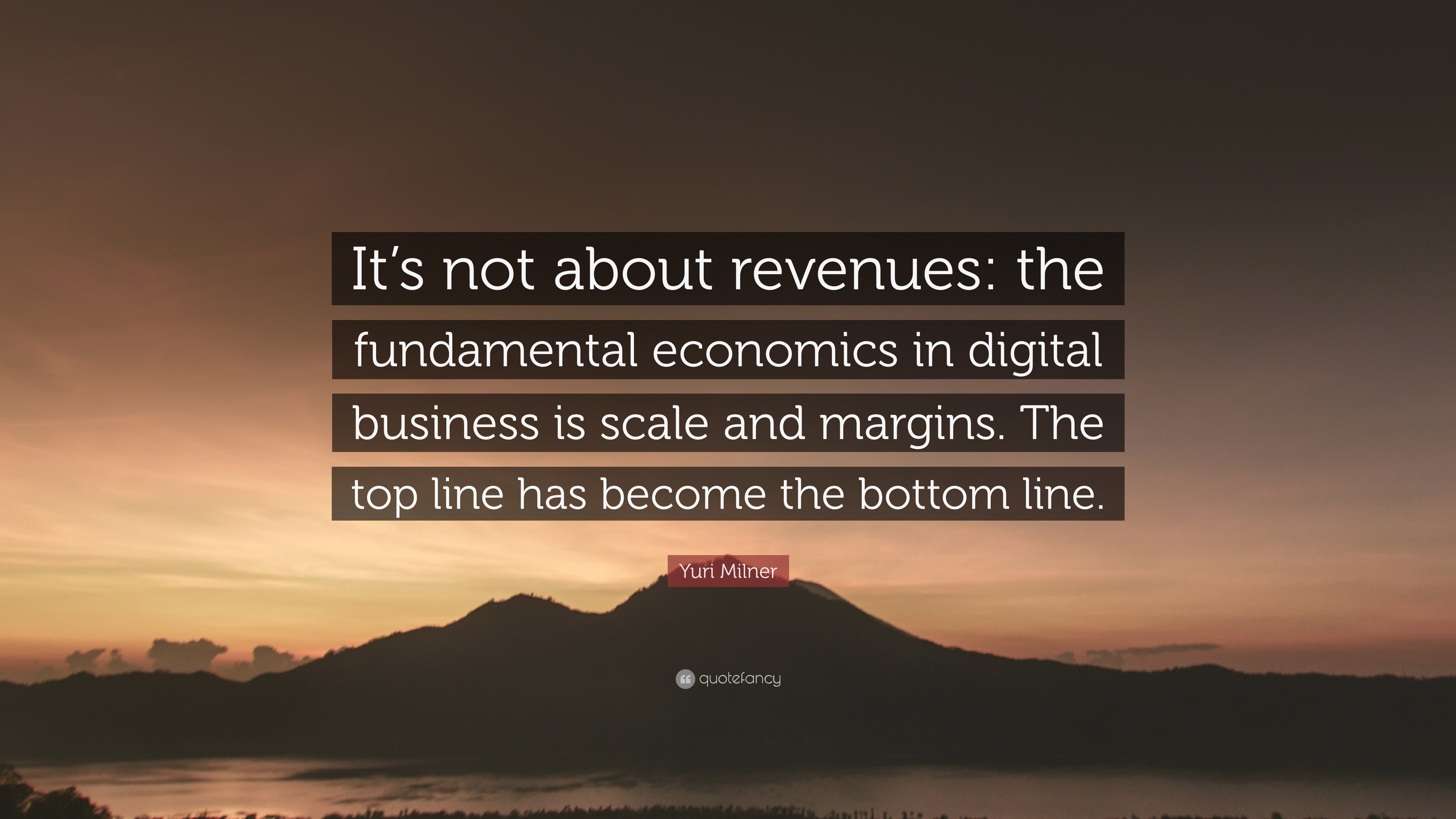DePIN: Redefining Data and Value Flow in AIoT, Building a Decentralized Business Ecosystem
This is my 316th column article.
After the ETHDenver 2024, the DePIN field has emerged as a rising star, attracting more and more attention. It represents a decentralized public infrastructure network that promises to enrich the underlying architecture of the digital world.
Even @VitalikButerin , the co-founder of Ethereum, couldn't help but ask:

Vitalik's observation hits the nail on the head: DePIN is indeed a new name for a field that has existed for many years. But just as a butterfly needs to go through the pupa stage before it can emerge from its cocoon, an idea also needs to wait for the right moment to take flight.
The famous French writer Victor Hugo once said, "Nothing is more powerful than an idea whose time has come." Today, the springtime of DePIN is quietly arriving. It attracts countless developers, entrepreneurs, and investors with an unstoppable momentum.

If the decentralized Uber and other projects mentioned by Vitalik were the first wave of DePIN, then now, the second wave is surging in. This wave is more powerful, has a broader scope, and a more profound impact. It is integrating DePIN with various industries, from cloud storage, wireless networks, new energy, and the Internet of Vehicles, to artificial intelligence, covering all aspects without omission.
In this era of ubiquitous connectivity and data-driven innovation, DePIN is like a breath of fresh air, bringing us a series of revolutionary innovations such as decentralization, privacy protection, and incentive mechanisms. It is expected to become one of the bridges connecting the virtual world with the real world, injecting new bottom-up momentum into the development of human society.
In the future, there may be more and more waves driving DePIN to become an indispensable part of the digital infrastructure. And now is the best time to get involved in DePIN.
DePIN: The Key to Unlocking the AIoT 2.0 Era
As AIoT continues to evolve, a new era is quietly emerging. According to a report by the Global System for Mobile Communications Association (GSMA), countries such as the United States, China, Japan, South Korea, Germany, and the United Kingdom have already achieved a milestone where the number of Internet of Things (IoT) connections surpasses the number of human internet connections. This signifies that the intelligent AIoT has already established a certain scale of infrastructure, and the era of "things surpassing humans" has arrived.
The rise of AIoT means that the curtain has been raised on the era of intelligent IoT. It has revolutionized the industrial chain and value chain in an all-round way, bringing scenario-based intelligent experiences and driving the digital transformation of various industries.
AIoT is leaping from the 1.0 era to the 2.0 era, shifting from simply pursuing the quantity of connections to seeking intelligence and value. In the 1.0 era, AIoT achieved the connection of previously "dumb devices" without connectivity to the Internet of Things. The 2.0 era signifies that we are about to enter a new stage of efficiency, where a large number of mainstream devices are all intelligent and value-increasing.
Against this backdrop, the rapid warming and buzz around DePIN seem to be an inevitable trend.
DePIN is the product of the combination of Web3 and AIoT. It adopts a decentralized approach to realize the interconnection between AIoT devices while providing a more secure way of data storage and transmission, effectively solving the current security and privacy issues in AIoT.
For practitioners in the AIoT field, paying attention to the development of DePIN will help grasp the latest technological development directions and trends, as well as future opportunities in this field.
DePIN is attempting to achieve the most efficient resource scheduling at the lowest cost of silence and on the largest scale, providing a brand-new methodology for Web3 to reshape the construction model of digital infrastructure in the traditional world.
From a business model perspective, DePIN has opened up an innovative path for building global infrastructure with low barriers to entry. From a paradigm shift perspective, DePIN integrates technologies such as DAO, blockchain, and AIoT, which may bring true Web3 integrated innovation.
The current AIoT market is still in a fragmented state, much like Brazil's Lençóis Maranhenses National Park, where from afar, it appears to be a lush green expanse with shimmering blue waters, but in reality, it is composed of countless small lakes.
In such an environment, the bottom-up construction approach of DePIN may be better suited to adapt to market demands, providing ample space for small "fish" to roam freely and live happily.

At the same time, we must also recognize that the digitalized global order is exacerbating the digital divide between countries. This complex global landscape is jointly shaped by economic cooperation and competition, technological development, and policy restrictions among different countries and regions.
As a result, DePIN projects may possess distinct scenario, industry, and geographical attributes.
Looking back, a decade ago, there were already ideas and proposals to combine scenarios such as charging piles, photovoltaics, and automobiles with Web3 incentive mechanisms. In retrospect, they were the embryonic forms of DePIN. However, at that time, the market environment was flooded with numerous short-term, quick-profit applications, and few projects were willing to invest in significant and long-term DePIN construction, making it difficult for these proposals to come to fruition.
Today, as competition in the Web3 market intensifies, real-world demands are forcing the market to seek innovative narratives that deeply integrate with the real economy, and DePIN is beginning to receive high attention from all quarters.
However, we must also soberly recognize that for DePIN to truly mature, it still needs to undergo a cyclical development process, and project parties need to be prepared for a protracted battle.
Despite the numerous challenges, DePIN still represents a future full of hope and opportunity.
DePIN: Learning from AIoT Platform Experiences to Attract a New Billion Users into Web3

To better predict the development trends of DePIN, we can draw an analogy with the development of AIoT platforms. Although the trajectories of DePIN and AIoT platforms are not entirely the same, they share many similarities.
Both DePIN and AIoT platforms are technology-driven innovations, and their development and maturity depend on breakthroughs and iterations of underlying technologies. The value of DePIN and AIoT platforms lies in connection and empowerment, and they both need to establish an ecosystem of multi-party participation and symbiotic collaboration. DePIN and AIoT platforms are not castles in the air; their implementation and application need to be combined with specific scenarios and requirements. In addition, DePIN and AIoT platforms have certain similarities in market cultivation, development stages, and industry influence, making the development paths of these two seemingly different platforms remarkably consistent.
I have been closely observing the development of the Internet of Things (IoT) since 2012, and every year I see a large number of AIoT platforms being born, with this momentum persisting and growing stronger. In 2017, the number of global IoT platforms was 450. In 2019, according to IoT Analytics, the number of IoT platforms was 620. In 2021, the number of IoT platforms reached its peak, with approximately 1,600 global IoT platforms according to data from Deutsche Telekom!
However, those once-robust AIoT platforms also face the possibility of "supply cuts." Previous analysis articles mentioned that about one-third of IoT platforms have gone out of business in recent years.
Stumbling on this path are not only novices but also seasoned veterans. IBM's Watson platform, GE's Predix platform, Google's Android Things platform, Samsung's Artik IoT platform... for various reasons, they have faded from view.
Now, the competition among IoT platforms is gradually becoming clear, with Google and Alibaba downsizing, while Microsoft and AWS are expanding. In August 2023, Google stopped its IoT Core service as scheduled. In December 2023, Alibaba Cloud cut its IoT business line's hardware integration business and reduced related personnel, with a layoff ratio exceeding 50%.
However, some companies have not followed suit. Instead, AWS and Microsoft expanded their IoT platform services in 2023. At this point, AIoT platforms have gone through the early stage of wild growth, taken shape, crossed the inflection point, and entered a period of steady growth.
This point coincides with the challenges faced by DePIN projects. DePIN projects require long-term accumulation and precipitation, and only projects that span cycles are valuable. Therefore, it is more reasonable to lay out during this cycle.
Amino Capital partner and former Google senior researcher Wu Jun has a "third wave theory" for investment. In the first and second waves, either the technical threshold is high, or the market education cost is high, and public acceptance is relatively low. Only the third wave is the technological wave that truly benefits the public. Corresponding to products, it means that any technological product has to reach the third generation before it can be widely accepted by the public and then exist for a long time.
For example, with smartphones, Microsoft, BlackBerry, and Nokia all developed their own smartphones early on, which was the first wave, but at that time, only technology enthusiasts interested in such products were willing to try them out. The second wave was Apple, high-end and fashionable, but at that time, the price was high and not popular enough. Finally, in the third wave, Android emerged, with a more affordable price and practical functions, truly covering the mass market and setting off a global smartphone wave.
Project entry and investment are like surfing; the choice of timing determines success or failure.
The first wave is too early, with immature technology and an unclear market; the third wave is too late, with fierce competition and limited room for returns. The best time is at the beginning of the second wave, when technology has matured and the market shows initial potential. This requires investors to have a keen eye, patience, and determination to accompany the project as it grows. Just like the development of smartphones and the internet, only companies that emerged in the second wave have achieved today's glory. Therefore, seizing the second wave is the way to rise with the momentum, lead the wave, and maximize investment value.
DePIN is currently at a stage similar to second-generation smartphones. Although it has advanced technology and leading concepts, it may still be some distance away from large-scale commercial use. However, just as AIoT platforms have gone through a process from wild growth to gradual maturity, DePIN also needs a process of gradual improvement and continuous iteration.
In this process, project parties need to have firm beliefs, grasp the direction, and gradually build DePIN into a mature, practical, and inclusive platform through technological innovation and ecosystem construction, eventually achieving the transformation of the "third wave" and becoming a truly popular technology product.
The development history of AIoT platforms is both a mirror and an opportunity for DePIN. From wild growth to gradual maturity, from technology-driven to ecosystem-led, this is the evolutionary path that every emerging platform must go through.
Some believe that DePIN will be an effective way to attract billions of users into Web3 and has tremendous potential. As long as it can fully learn from the development experience of AIoT platforms and give play to its unique advantages in technology, scenarios, models, and other aspects, DePIN will surely be able to stand out in the wave of the digital economy and become a key force leading the future.
DePIN: The "Economies of Scale" in the Web3 Era

For DePIN projects, traditional financial evaluation indicators may not be applicable.
As Israeli entrepreneur and investor Yuri Milner stated:
"It's not about revenues: the fundamental economics of digital businesses are scale and margins. The top line has become the bottom line."
This viewpoint accurately reveals the essence of DePIN projects.
The core value of DePIN lies in decentralization and scalability. Unlike traditional centralized platforms that generate revenue by controlling data and users, DePIN aims to build an open, transparent, and participatory decentralized network.
Only when the network scale is large enough can decentralization be truly realized and its advantages be brought into play. Therefore, at this stage, it is not appropriate to constrain the development of DePIN with sales figures, because the number of DePIN projects is not too many, but too few. DePIN is destined to be a protracted battle, and if we approach it with the attitude of fighting a war of annihilation, we are bound to be defeated.
The phrase "It's not about revenue" has significant implications for the development of DePIN.
DePIN needs to prioritize expanding its user base and building its ecosystem. Excessive focus on short-term revenue may limit network growth. Scalability implies stronger network effects and higher value. The value of DePIN comes from the interaction and collaboration among participants in the network. The more participants, the stronger the network effects, and the greater the value each participant can obtain.
Expanding the scale can enhance the value of the entire network and attract more users and capital. At the same time, scalability helps DePIN build moats and competitive advantages. Once DePIN reaches a certain scale, it will form a strong first-mover advantage and brand effect, consolidating its market position.
Focusing on scalability aligns with DePIN's long-term development strategy. DePIN's vision is to establish a global decentralized infrastructure network that serves various industries, which requires long-term effort and cultivation. Short-term revenue fluctuations should not shake the project's original intentions and mission. Only by focusing on creating excellent products and services and providing high-quality user experiences will revenue and value follow.
In fact, during the Web2 stage, high-growth tech companies like Amazon also embraced the concept of "It's not about revenue" at certain stages of their development history. Amazon placed great emphasis on market expansion and user growth in its early stages rather than short-term profitability.
This strategy helped Amazon quickly establish scale advantages and brand influence, laying the foundation for its leading position in the e-commerce field. However, as Amazon continued to develop, revenue and profitability also became the focus of investors and the market. When evaluating the financial performance of companies like Amazon, it is necessary to comprehensively consider revenue growth, profitability, and cash flow, rather than pursuing a single indicator in a one-sided manner.
As an emerging decentralized network model, the value assessment of DePIN differs from that of traditional companies.
Based on the characteristics of DePIN, indicators such as network activity, number and quality of nodes, developer activity, token economy metrics, and actual use value may be more suitable for evaluating its value.
These indicators reflect the decentralized nature, network activity, ecosystem prosperity, and actual use value of DePIN. As DePIN continues to develop, these indicator systems also need to be constantly improved and innovated. Only by establishing a scientific and reasonable evaluation system can we better guide the healthy development of DePIN and lay a solid foundation for building Web3 infrastructure.
In summary, the phrase "It's not about revenue" reveals the core logic of DePIN's development—focusing on network scale and ecosystem building, rather than short-term income. Only by achieving true scalability can DePIN realize its decentralized ideals and stand in an invincible position in future competition. This requires the joint efforts and long-term values of project parties, communities, and users.
In Conclusion
Compared to other Web3 projects, what sets DePIN apart is its natural connection to the real economy and AIoT scenarios. This means that DePIN is not merely an abstract concept in the digital world, but also a practitioner connecting the virtual and the real. The development of DePIN will not only profoundly impact the landscape of the digital economy but also inject new impetus into the digital transformation of the real economy.
From residential energy storage to new energy vehicles, from smart cities to the industrial internet, DePIN is extending its reach into various fields, reshaping every aspect of our production and life.
This ubiquitous connectivity will bring unprecedented efficiency improvements and value creation to society. Perhaps in the near future, DePIN will become an indispensable infrastructure like electricity, profoundly changing everyone's life.
At the same time, DePIN also provides a practical path for ordinary people to participate in Web3 construction. Unlike many other infrastructure projects, DePIN does not require participants to have a deep technical background or substantial funds.
Everyone can contribute idle storage space, computing power, and other resources to earn a certain income and become a builder of the Web3 era. This inclusiveness and universal benefit will greatly expand the participating groups in Web3, allowing everyone to share the dividends of the digital economy.
Of course, the path of DePIN's development is not smooth sailing. It needs to face a series of complex factors such as technological challenges, market competition, and regulatory environments. Although DePIN is still in the stage of exploration and trial and error, the concepts and trends it represents are already unstoppable.
As long as we maintain an open mindset, agile thinking, and tenacious will, we will surely be able to push DePIN forward towards a broader future.




评论 (0)